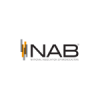Video on demand
Intro to NextGen Broadcast Features – WIAV Demo
The future of over-the-air broadcasting is now available in the nation’s capital. The Sinclair Broadcast Group Class A digital station, WIAV – Channel 30 – has deployed the new NextGen Broadcast transmission standard that revolutionizes viewer experiences and enables multiple new business opportunities for content delivery.
In the video above, Sinclair’s Jonathan Elias introduces NextGen Broadcast functionality on Washington, D.C., station WIAV.
Based on the same fundamental technology as the internet, digital applications, and other web services, NextGen TV can support a wide range of features that are currently in development. In addition to providing an improved way for broadcasters to reach viewers with advanced emergency alerting, NextGen TV allows viewers to be immersed in stunning video with brilliant color, sharper images and deeper contrast that will make them feel like they’re really there. NextGen TV adds a whole new dimension to video viewing, with vibrant pictures and new Voice+ dialogue enhancement, to bring voices to the foreground. Viewers will feel the power of movie theater-quality sound that enables them to hear every voice clearly and offers consistent volume across channels. NextGen TV is also enhanced with Internet content to get the most out of live sports, live news, live events and more, in real time.
To illustrate the benefits of the NextGen TV standard, WIAV is demonstrating several of the new capabilities. Among those highlighted are:
- E-/distance learning
- Hybrid TV, connecting broadcast and broadband content
- Audio applications
- Mobile reception
NextGen TV is designed to be upgradable, so a viewer’s television advances with the latest technology. Television sets capable of receiving NextGen TV service are available today from multiple vendors including Sony, Samsung and LG with more receive devices, including mobile phones, on the horizon. Features available on NextGen TV may vary by device and by broadcaster as commercial service becomes available in local markets. Other near-future datacasting applications include provisioning for the Internet of Things, enhanced GPS services and autonomous driving vehicle support.

